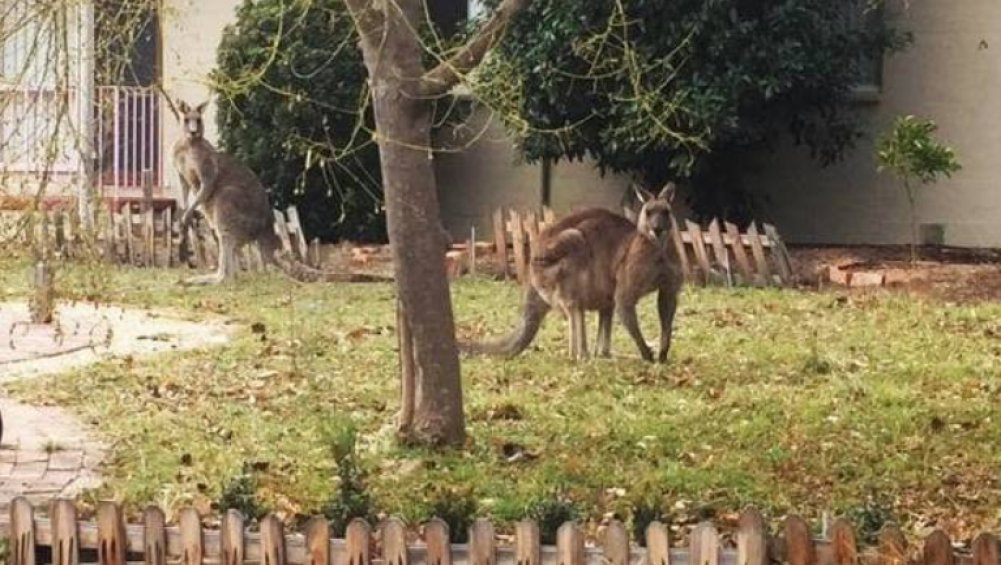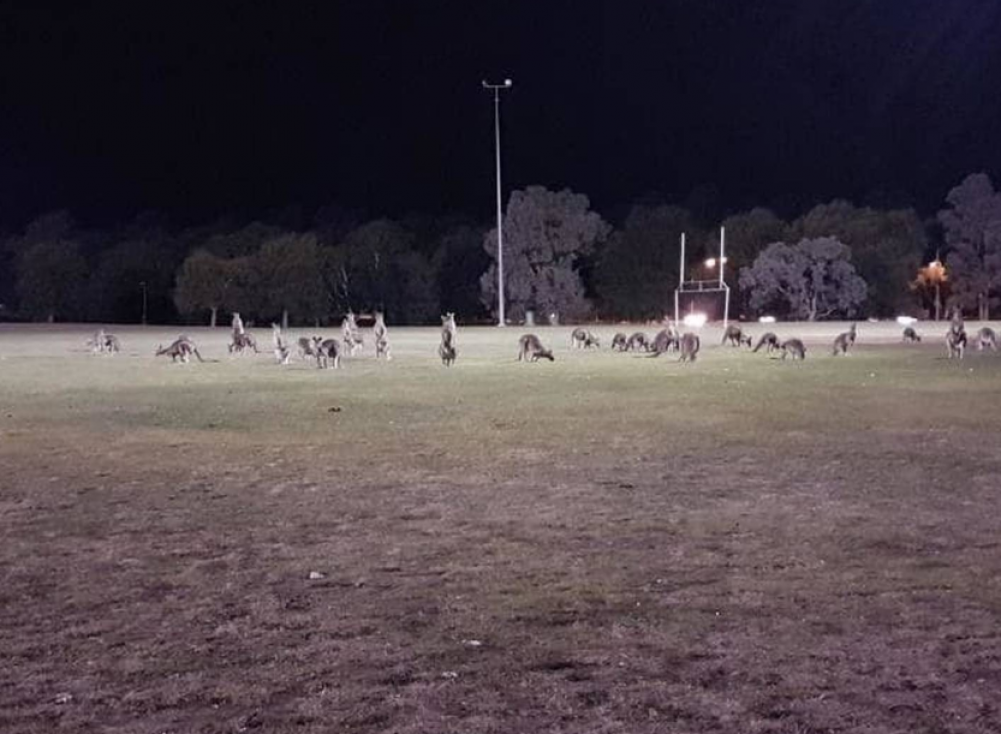
You might also like:
Driving through the Canberra suburb of Ainslie about 9pm, a mob of about 20 kangaroos hopped across the road. They took their time, lazily eyeing my car.
Just for the record, Ainslie is not out in the boondocks. It’s classified as inner north and is 3.5km from the CBD.
It’s the Auckland equivalent of finding these hairy dudes cavorting in the middle of the road in Newmarket or in Wellington, perhaps it would be Newtown.
The thing that’s odd about this is that in Canberra, this isn’t odd at all. They’re used to this bizarre state of affairs. A 40kg old man kangaroo could jump in front of your car windscreen, or down your street, at any time.
Although there are no exact numbers, the ACT is home to tens of thousands of roos and has recorded some of the highest densities of eastern greys in Australia.
Especially in times of dry weather, those marsupials come hopping right into town — onto our football ovals, down our suburban streets and right into our backyards.
Ainslie resident Peter Robinson took to Facebook a few days ago because, to his shock, he found a large eastern grey had hopped over his fence into his back garden and was happily eating his lawn
“We’ve been amazed by the quantity of roo poo in the front yard this year but in an all-time first, we found this one in our backyard,” he wrote.
But these guys aren’t just invading Ainslie. When I put a call out for people to send me photos of roos in the burbs, snaps rained in from locations all across town: Tuggeranong and Woden in the south, Gungahlin in the north and numerous suburbs in the inner north.

One friend even wrote: “Ginge! Go to Deakin and check out the oval in front of the Royal Australian Mint. They are on that oval all day, every day!”
That’s right. In front of the place where the cash in your pocket was made, those little buggers are pooing and eating to their heart’s content.
Speaking of sporting grounds, public servant Tara Searle was sitting in the car waiting to collect her daughter from soccer practice a few days ago and said: “I saw a whole pod of kangaroos jumping across the Dickson oval while the girls were practising soccer at about 7.30pm. They (the players) weren’t phased at all. Apparently it happens all the time.”
In fact, just last month a kangaroo made national news when it disrupted a local soccer game between Belconnen United Blue Devils and Canberra FC. At one stage, the kangaroo lay down on the pitch midgame. It also played with the ball, with commentators jokingly telling the ABC the marsupial sent “a good quality pass”.
Despite the common occurrence of roos invading our city, long-time Canberra sports commentators were still sufficiently astounded by the match’s interruption, to claim it was a one-of-a-kind event.
Canberra kangaroos are also fond of taking part in photo shoots without invitation, as artist and photographer Akka Ballenger Constantin discovered when she tried to snap portraits of ACT Labor politician Tara Cheyne.
“We literally were photobombed by the kangaroos who … started to run towards us and lined up behind Tara,” Akka wrote on her blog.
So why are kangaroos currently invading Canberra suburbs — even more than usual?
Director of ACT Parks and Conservation Daniel Iglesias said: “It’s a perfect storm of hardship for kangaroos in the Canberra region at the moment.
MORE: Warning over kangaroos at popular tourist destination
MORE: Kangaroo population is booming to double the human population
“Winter is seasonally difficult for kangaroos as there is little feed, but this year (there has been) very dry conditions, coupled with some record cold nights.”
“Frosts dry grasses out,” he said, and this adds to the problem of roo food being scarce.
“Kangaroos are travelling further than usual for food and they are forced to consider ovals, front yards, laneways and roadsides to find some green grass.
“Additionally, in winter there’s obviously more motorists on the road at dawn and dusk going to and from work. This puts more people on the road at the same time as kangaroos,” he said.
This means that encounters with roos in the Australian capital are not always that peaceful — or hilarious.
Back in 2013, ACT Greens MP Shane Rattenbury — a bloke known for his passion for both running and cycling — had a nasty encounter while out for his morning jog. He startled a female kangaroo, and she got mad, gashing the politician on one leg and bruising him on the other.
I’ve had my own startling encounters too. One day a few years ago, I was stuck in morning peak-hour traffic on Northbourne Avenue taking my youngest child to daycare. That, by the way, is the main road into and out of town.
It was bumper to bumper. A huge kangaroo jumped from the median strip, over the bonnet of my car and straight into the car in the parallel lane. The force of its jump knocked off the car’s side mirror and scared the living daylights out of the driver. (Luckily traffic was only moving at a crawl.)
Mr Iglesias knows this problem well.
“As someone who has spent many years being a ranger, I can tell you it is a traumatic experience having to deal with kangaroos hit by cars.
“We have rescued kangaroos out of backyard pools, multi-story carparks and shopping centre loading bays,” he said.
Hi best advice? “Know where your local mob of kangaroos hang out and try to avoid them at the critical times around dawn and dusk.”
In a helpful brochure about living in proximity to kangaroos, the ACT’s Environment Department reminds locals:
• During times of peak kangaroo activity, slow down if you are driving and don’t swerve to avoid hitting them, because you risk hitting oncoming cars or running off the road.
• Appoint a passenger kangaroo ‘spotter’ (great tip!)
• Dogs and kangaroos don’t mix very well — and it’s best to keep them on a lead if roos are nearby
• If kangaroos are chased by dogs, mobs of them can end up on the roads or in backyards where they can damage themselves and/or property.
The ACT Government brochure states: “Some kangaroos, especially large males, will defend themselves, their offspring or their mates against dogs that harass them. It is important to keep your dog on a lead at all times.” (A few years back my sister’s dog was nearly killed in this exact circumstance!)
Source: nzherald.co.nz
